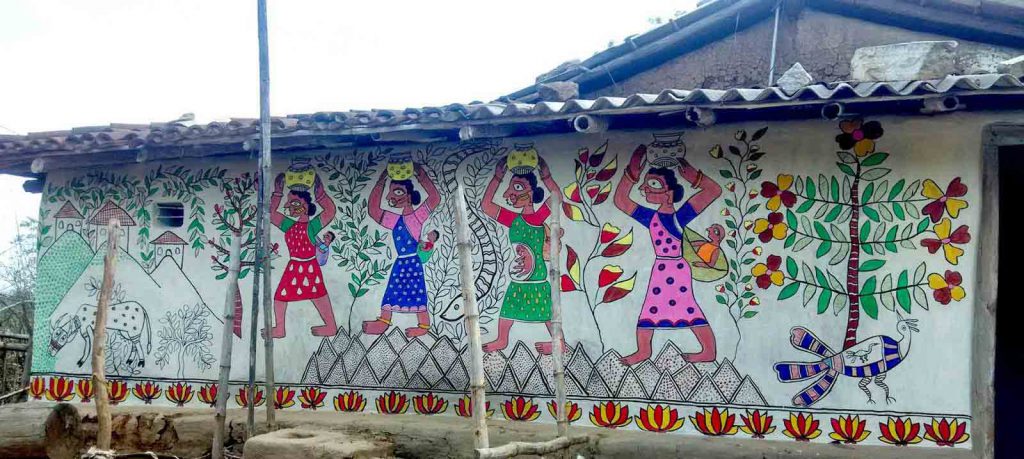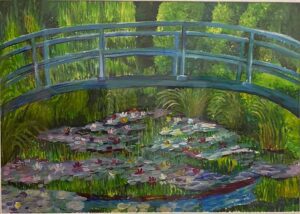Madhubani Art or Mithila Art Mithila region or Bihar and Nepal is practiced. Often characterised by the complex geometrical patterns, these painting are known for representing ritual content for particular occasions, including festival, religious rituals etc.. The colors used in Madhubani painting are usually derived from plants and other natural resources. These colors are often bright and pigments like lampblack and ochre are used to create black and brown respectively. Objects like twigs, matchsticks and even fingers are used to create the paintings.
Madhubani paintings originated in the Mithila region of Bihar border of Indian & Nepal. Heritage of Madhubani art goes back a minimum of 2,500 years and its celebrated figures embody Buddha and Mahavira. it’s additionally the birthplace of mythical being ‘Sita’, the central character in Ramayana. Hence, her life stories are oftentimes represented within the native art.

Madhubani literally means ‘forests of honey’ and refers to paintings, from the Bihar-Nepal border region, in a distinct style that captures viewers’ attention with their vibrancy.
Some of the initial references to the Madhubani painting are often found within the Hindu epic Sanskrit literature ‘Ramayana’, This painting depicts the theme of Ram Sita Vivah. It is believed that King Janak ordered his kingdom to decorate the town for the wedding of his daughter Sita. The knowledge was passed down from generation to generation and the paintings began to adorn the houses of the region. The women of the village practiced these paintings on the walls of their respective home. Their paintings often illustrated their thoughts, hopes and dreams.
Styles & Designs of Mithila art
Even though this art is very old, it’s preserved its original vogue and content in its place of birth of Mithila. These ancient artists still build their own colors by extracting them from plants. Madhubani art has five distinctive styles, namely, Bharni, Katchni, Tantrik, Godna and Kohbar. In the 1960s Bharni, Kachni and Tantrik style were mainly done by Brahman and Kayashth women, who are ‘upper caste’ women in India and Nepal.

The colouring is of two styles- Kachni (hatching) and Bharni (shading.) Kachni uses delicate fine lines to fill the painting and not much color is used. Bharni (shading) uses solid colors to shade and fill the pictures. It uses black outlines filled with vibrant colors. A variety of inventive patterns are made with hatching and stippling. The designs announce the occasion of the celebration and solicit good fortune and divine blessings
Some Fun Facts about Madhubani Painting
-
From period of Ramayana.
Origin of this art was famous ‘sita Kalyana’ It’s said that king Janaka arranged quite number of artist to create painting of marriage. -
Madhubani painting prevented deforestation
Madhubani paintings prevent deforestation as artists painted Hindu deities on Trees, restraining people from cutting. -
Mud walls to on canvas to Bangles
find Madhubani paintings on canvas, cushions, paper or even cloths. - Geometric Based Design


